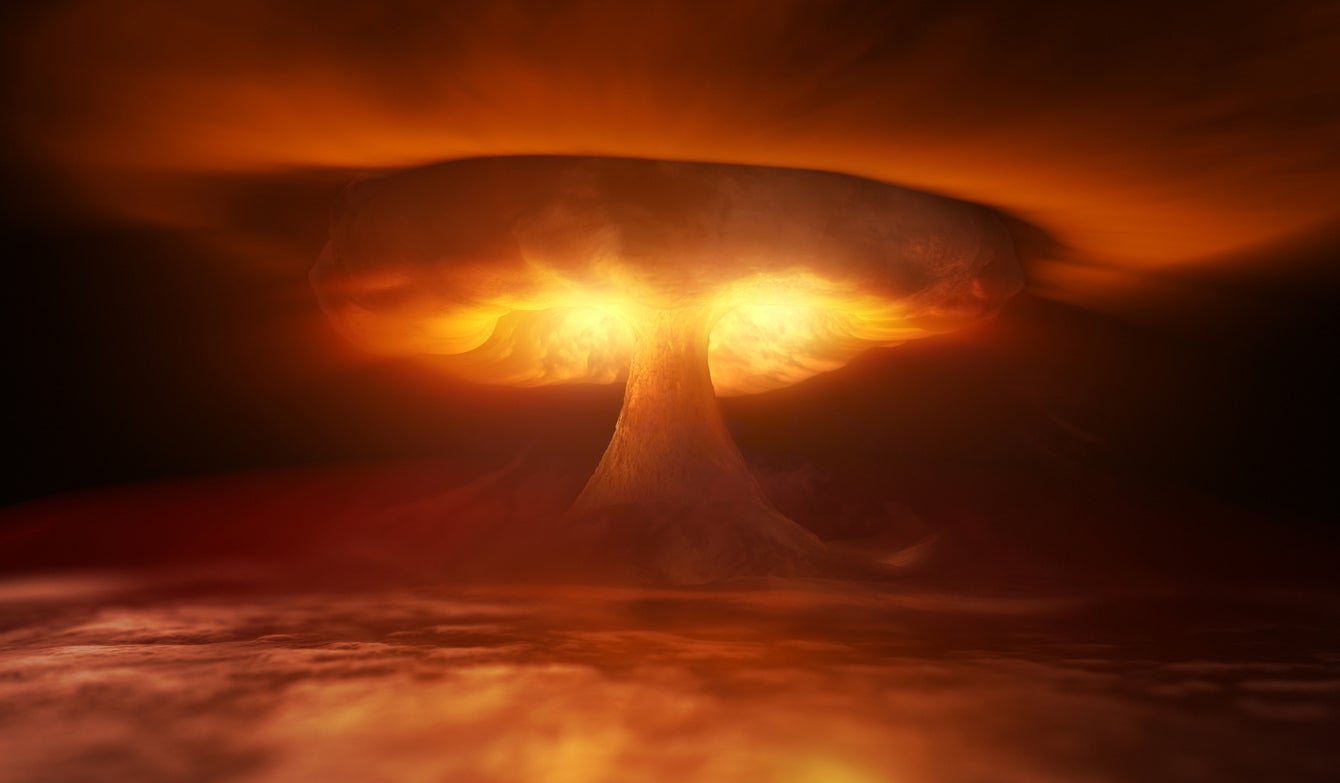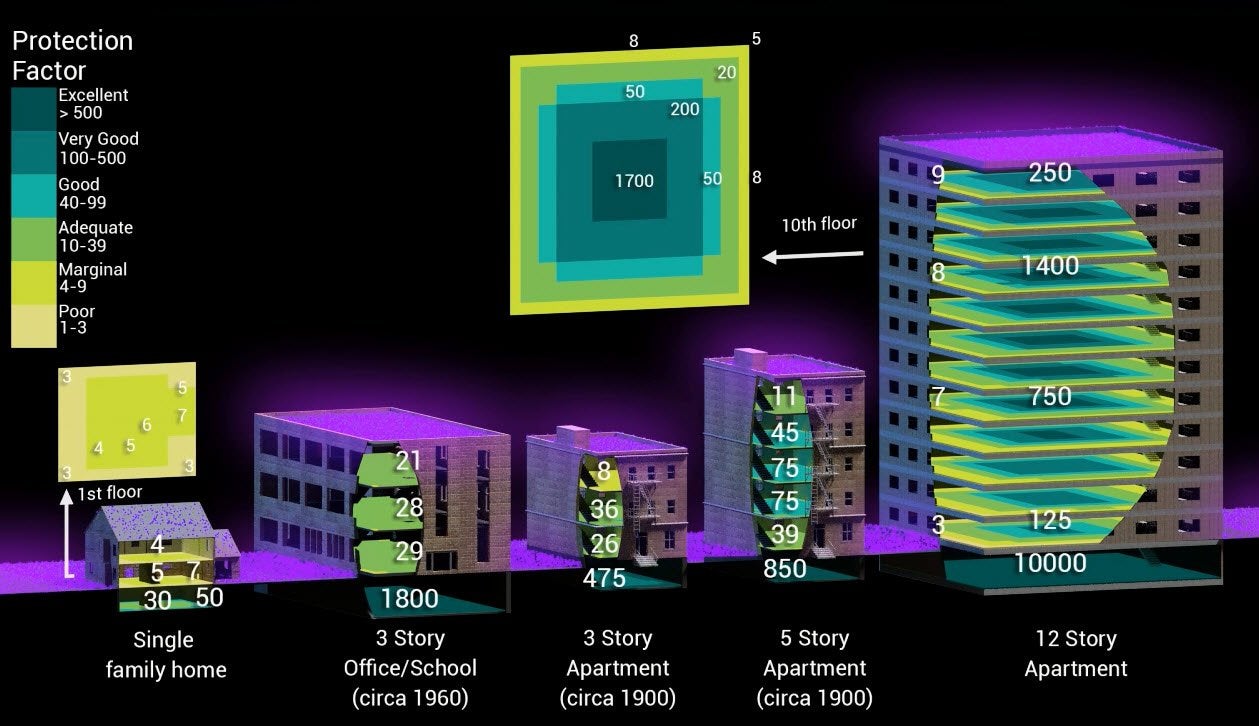If a nuclear bomb explodes nearby, here's why you should never, ever get in a car

Your support helps us to tell the story
From reproductive rights to climate change to Big Tech, The Independent is on the ground when the story is developing. Whether it's investigating the financials of Elon Musk's pro-Trump PAC or producing our latest documentary, 'The A Word', which shines a light on the American women fighting for reproductive rights, we know how important it is to parse out the facts from the messaging.
At such a critical moment in US history, we need reporters on the ground. Your donation allows us to keep sending journalists to speak to both sides of the story.
The Independent is trusted by Americans across the entire political spectrum. And unlike many other quality news outlets, we choose not to lock Americans out of our reporting and analysis with paywalls. We believe quality journalism should be available to everyone, paid for by those who can afford it.
Your support makes all the difference.The first thing you'd see if a nuclear bomb exploded nearby is a flood of light so bright, you may think the sun blew up.
Wincing from temporary blindness, you'd scan the horizon and see an orange fireball. The gurgling flames would rise and darken into a purple-hued column of black smoke, which would turn in on itself. As a toadstool-like mushroom took shape, the deafening shock front of the blast would rip through the area — and possibly knock you off your feet.
Congratulations! In this hypothetical scenario, you've just survived a nuclear blast with an energy output of about 10 kilotons (20 million pounds) of TNT. That's roughly 66% of the energy released by either atomic bomb dropped on Japan in 1945.
This scenario may sound far-fetched, but more than 14,900 nuclear weapons exist in the world, and kiloton-class nukes, like the one we just described, are proliferating in weapons stockpiles. In fact, a nuclear detonation of 10 kilotons or less a terrorist is one of 15 disaster scenarios the US government has planned for.
No one could fault you for panicking after the sight and roar of a nuclear blast. But there is one thing you should never do, according to Brooke Buddemeier, a health physicist and radiation expert at Lawrence Livermore National Laboratory.
"Don't get in your car," he told Business Insider. Don't try to drive, and don't assume that the glass and metal of a vehicle can protect you.
Why vehicles and nuclear survival don't mix
Avoiding driving after a nuclear blast is wise because streets would probably be full of erratic drivers, accidents, and debris. But Buddemeier says there's another important reason to ditch the car: a fearsome aftereffect of nuclear blasts called fallout.
Fallout is a complex mixture of fission products, or radioisotopes, created by splitting atoms. Many of the fission products decay rapidly and emit gamma radiation, an invisible yet highly energetic form of light. Exposure to too much of this radiation in a short time can damage the body's cells and its ability to fix itself — a condition called acute radiation sickness.
"It also affects the immune system and your ability to fight infections," Buddemeier said.
Only very dense and thick materials, like many feet of dirt or inches of lead, can reliably stop the fallout.
"The fireball from a 10-kiloton explosion is so hot, it actually shoots up into the atmosphere at over 100 miles per hour," Buddemeier says. "These fission products mix in with the dirt and debris that's drawn up into the atmosphere from the fireball."
Trapped in sand, dirt, cement, metal, and anything else in the immediate blast area, the gamma-shooting fission products can fly more than five miles into the air. The larger pieces drop back down, while lighter particles can be carried by the wind before raining over distant areas.
"Close into the [blast] site, they may be a bit larger than golf-ball-size, but really what we're talking about are things like salt- or sand-size particles," Buddemeier said. "It's the penetrating gamma radiation coming off of those particles that's the hazard."
That brings us back to why a car is a terrible place to take shelter.
"Modern vehicles are made of glass and very light metals, and they offer almost no protection," he says. "You're just going to sit on a road someplace" and be exposed.
Buddemeier says he's asked people what their knee-jerk response to a nuclear blast might be. It wasn't comforting.
"There was actually a lot of folks who had this notion — and it may be a Hollywood notion — of 'oh, jump in the car and try to skedaddle out of town if you see a mushroom cloud.'" he says.
However, fallout is carried by high-altitude winds that are "often booking along at 100 miles per hour," he says, and "often not going in the same direction as the ground-level winds. So your ability to know where the fallout's gonna go, and outrun it, are… Well, it's very unlikely."
What you should do instead of driving

Your best shot at survival after a nuclear disaster is to get into some sort of "robust structure" as quickly as possible and stay there, Buddemeier says. He's a fan of the mantra "go in, stay in, tune in".
"Get inside ... and get to the center of that building. If you happen to have access to below-ground areas, getting below-ground is great," he says. "Stay in: 12 to 24 hours."
The reason to wait is that levels of gamma and other radiation fall off exponentially after a nuclear blast as "hot" radioisotopes decay into more stable atoms and pose less of a danger. This slowly shrinks the dangerous fallout zone — the area where high-altitude winds have dropped fission products. (Instead of staying put, however, a recent study also suggested that moving to a stronger shelter or basement may not be a bad idea if you first ducked into a flimsy one.)
Finally, tune in.
"Try to use whatever communication tools you have," he says. He added that a hand-cranked radio is a good object to keep at work and home, since emergency providers, in addition to broadcasting instructions, will be tracking the fallout cloud and trying to broadcast where any safe corridors for escape are located.
There is only one exception to the "no cars" rule, says Buddemeier: If you're in a parking garage with your car, the concrete might act as a shield. In that case, you could stay there and listen to a radio inside your car.
If everyone followed these guidelines after nuclear blast, he says, hundreds of thousands of lives could be saved.
• Startling maps show every terrorist attack worldwide for the last 20 years
• Bill Gates loves this fiendishly difficult book
• 26 time-management tricks I wish I’d known at 20
Read the original article on Business Insider UK. © 2016. Follow Business Insider UK on Twitter.
Subscribe to Independent Premium to bookmark this article
Want to bookmark your favourite articles and stories to read or reference later? Start your Independent Premium subscription today.
Join our commenting forum
Join thought-provoking conversations, follow other Independent readers and see their replies
Comments